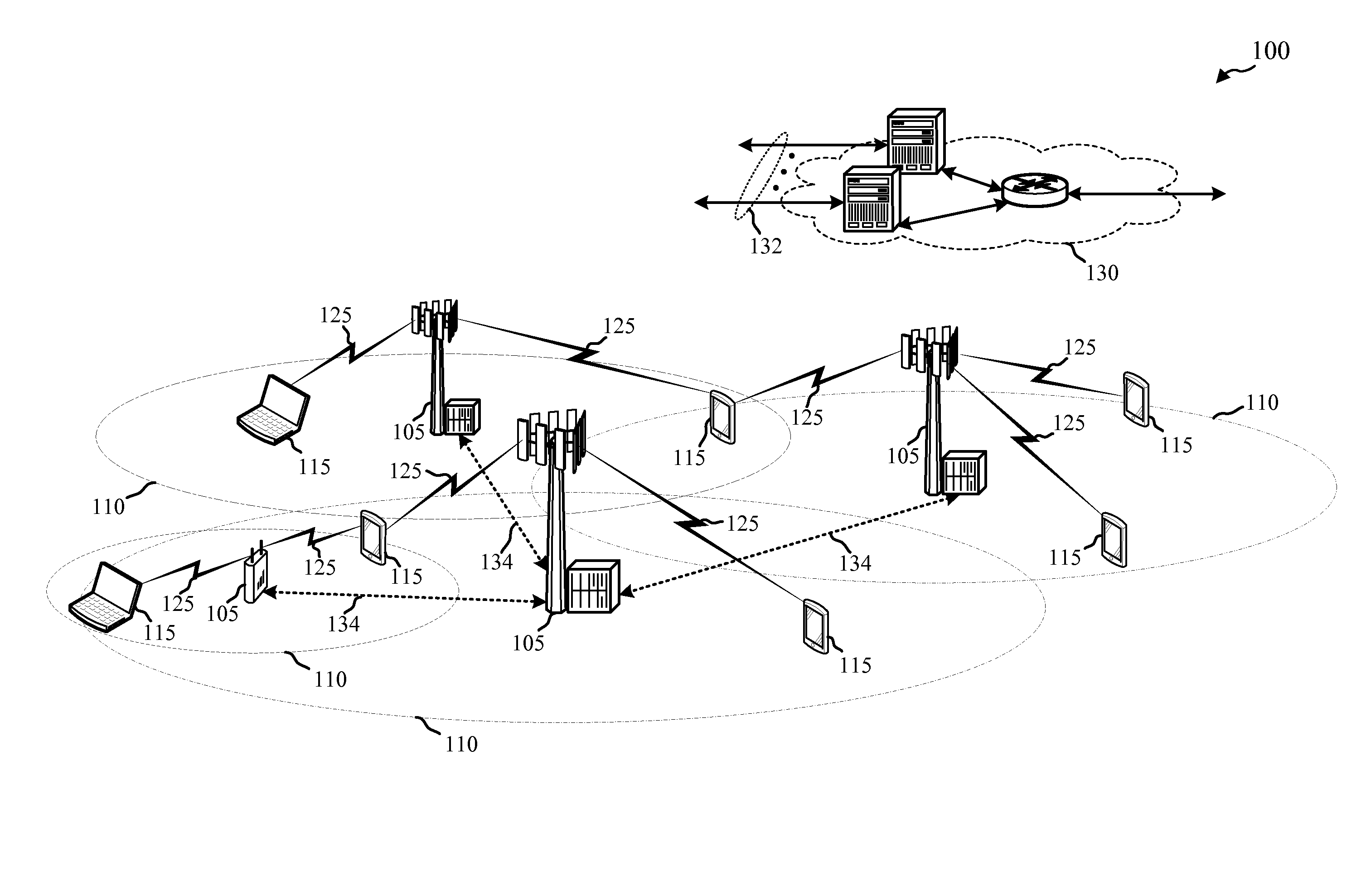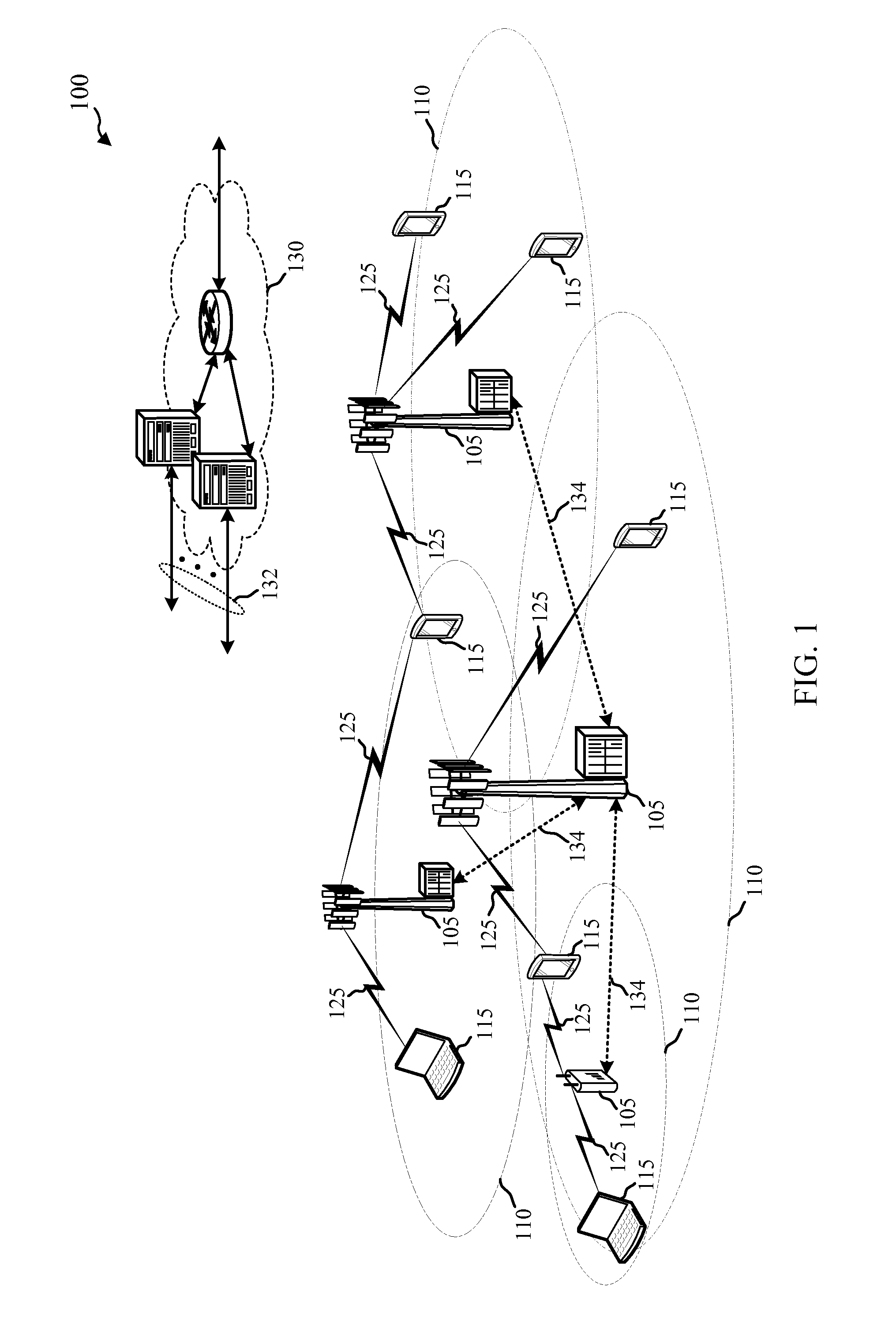Techniques for cell-specific reference signal (CRS)-based signaling in a shared radio frequency spectrum band
- Summary
- Abstract
- Description
- Claims
- Application Information
AI Technical Summary
Benefits of technology
Problems solved by technology
Method used
Image
Examples
Embodiment Construction
[0052]Techniques are described in which a shared radio frequency spectrum band is used for at least a portion of communications over a wireless communication system. In some examples, the shared radio frequency spectrum band may be used for LTE / LTE-A communications. The shared radio frequency spectrum band may be used in combination with, or independent from, a dedicated radio frequency spectrum band. The dedicated radio frequency spectrum band may be a radio frequency spectrum band for which transmitting apparatuses may not contend for access because the radio frequency spectrum band is licensed to a subset of users, such as a licensed radio frequency spectrum band usable for LTE / LTE-A communications. The shared radio frequency spectrum band may be a radio frequency spectrum band for which a device may need to contend for access (e.g., a radio frequency spectrum band that is available for unlicensed use, such as Wi-Fi use, or a radio frequency spectrum band that is available for us...
PUM
 Login to View More
Login to View More Abstract
Description
Claims
Application Information
 Login to View More
Login to View More - R&D Engineer
- R&D Manager
- IP Professional
- Industry Leading Data Capabilities
- Powerful AI technology
- Patent DNA Extraction
Browse by: Latest US Patents, China's latest patents, Technical Efficacy Thesaurus, Application Domain, Technology Topic, Popular Technical Reports.
© 2024 PatSnap. All rights reserved.Legal|Privacy policy|Modern Slavery Act Transparency Statement|Sitemap|About US| Contact US: help@patsnap.com










